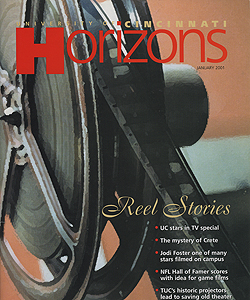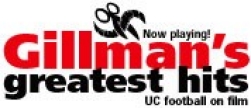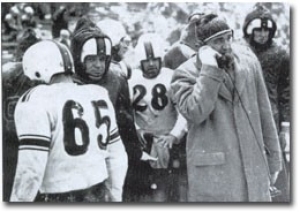by John Bach
Locked in a narrow storage space, deep within the winding corridors of UC's Laurence Hall exists a room full of irreplaceable treasures, a gold mine of Bearcat football memories.
Taking up nearly every square inch of wall space inside the closet-like area are more than 1,500 neatly stacked and dated metal canisters. Each holds a reel of 16 mm film -- the moving images of UC football from the last half century.
The program boasts no more valuable historical resource than the contents of each tarnished tin container: From Jim O'Brien's last-second field goal to Greg Cook's amazing senior year to Reggie Taylor's record-setting rushes. It's all there, reel after reel, stack after stack, highlights from the likes of Ken Byers, Dick Goist, Joe Morrison and Gene Rossi.
The entire library of film is a testament to Sid Gillman, UC's legendary coach during one of the top eras of Cincinnati football history, 1949-54, in which he directed the Bearcats to three Mid-American Conference titles and two bowl games. He earned wall space in both the College and National Football League halls of fame and is considered a master of the modern passing game.
Gillman often spent hours studying film. Although the tactic is commonplace today, 50 years ago using film to outfox opponents was revolutionary.
In fact, he and Paul Brown are credited as the first to really "break up" film. Armed with a pair of scissors and a reel of 16 mm, the focused competitor cut and spliced game films to analyze a team's every approach to on-field situations. Gillman's crude film editing allowed him to group and study specific offensive maneuvers and defensive sets, an innovative game plan at the time.
Squinting through the night behind his projector, he scrutinized a club's movies until he could anticipate their mistakes and manipulate their vulnerabilities. Gillman insisted the cameras roll at every practice and graded players based on the developed evidence.

 Past Issues
Past Issues
